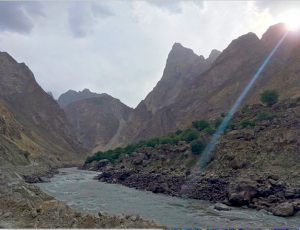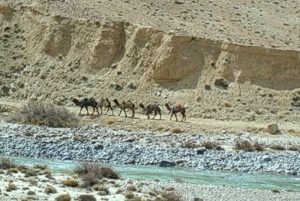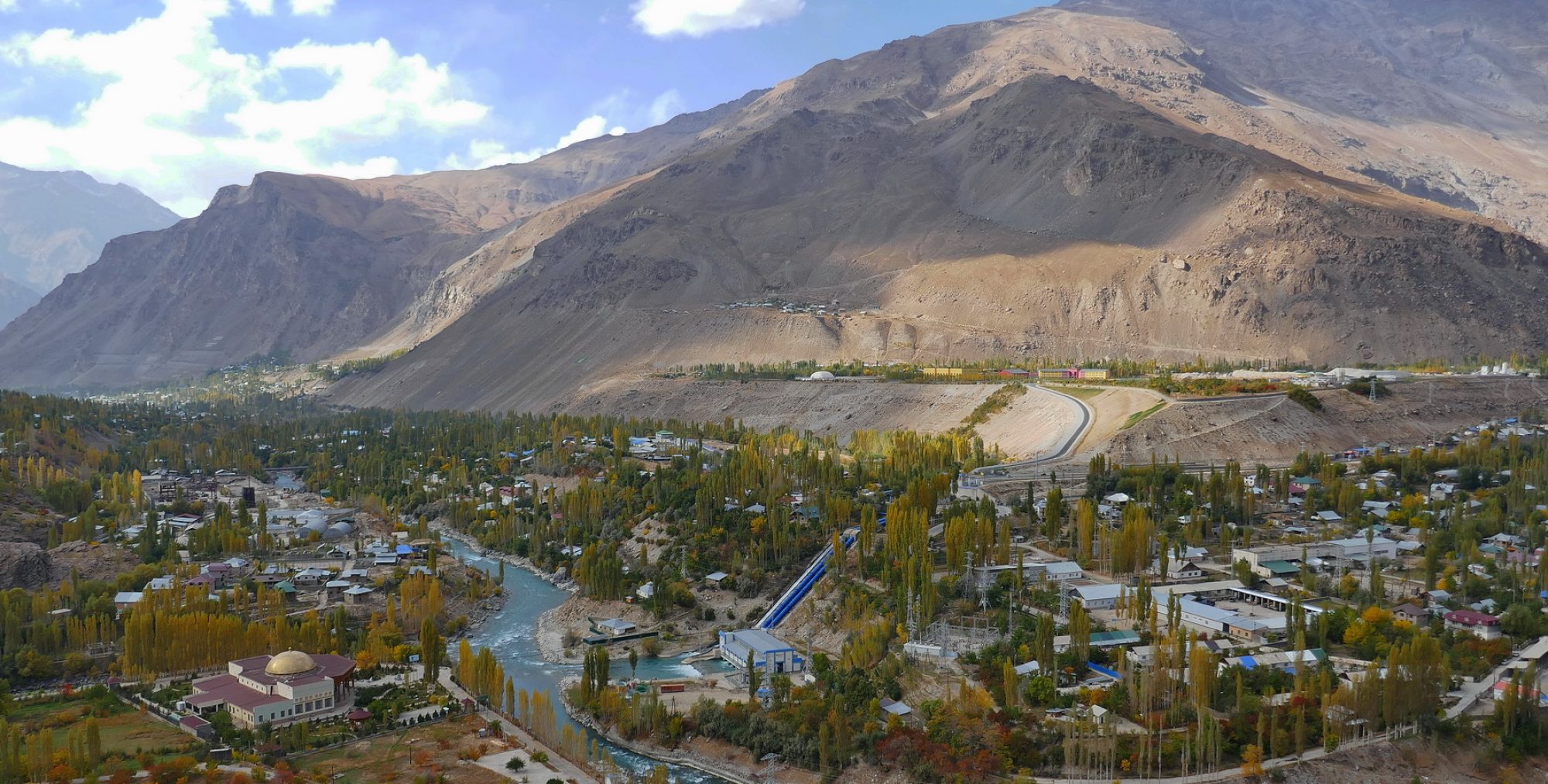The trip to Central Asia has been a great success. It unfolded in three parts: 1) tour into the High Pamirs and down towards the Wakhan Corridor; 2) meetings at the Khorog campus, Tajikistan; and 3) meetings in Bishkek & the Naryn campus, Kyrgyzstan.
‘Report’ from part 1, by Phil Hammer, May 14th.
The trips to see the Pamirs and absorb more of the culture have been fantastic! Lots of ideas for everyone for future trips and also things that will filter into the courses.
The Alichur trip that Chris and I did with Kobil was wonderful – really great in all ways. Incredible landscape (4000+m high, broad valleys) and we learned so much hanging out with the Wildlife Conservancy guides, talking with shepherds (through interpreters), spotting Marco Polo sheep and Siberian Ibex, setting up cameras to capture snow leopards prowling on two ridges, living in the head guide’s guesthouse. The Panthera project there is designed to increase snow leopard numbers that have plummeted over the last few decades. Overgrazing has led to the population of their major prey dropping. So, the goal is to improve grazing management, to help the sheep and ibex recover, to help the snow leopards recover. The communities have bought in. They have been developing guiding of tourists for wildlife spotting and big game hunting to raise money. That is then used to pay shepherds to rest valleys for a year or two. One MarcoPolo sheep can bring $20,000USD into the conservancy – a HUGE amount of money that is used for the project, but also community projects. It appears to be working… Chris was fascinated by the project and was bursting with research ideas!
We just returned from a 3 day trip with Brendan and Tara. We went south to Ishkashim and got to Darshai (after lunch and a couple of interesting road-side stops) where we went hiking with the head of the Darshai Wildlife Conservancy (primarily Ibex there). We stayed at his guesthouse and by dumb luck, Stefan Michel was there. He is the German that started the entire wildlife conservancy program initially (through GIZ I believe). So Chris and Tara have made contact with him directly. Nice guy… sort of retired from that project now, but he remains involved in some ways. He was their with his wife on a vacation.

Then a tourist day on the way to Langar with a few interesting stops (the Bibi Fatima hot springs and lunch and a Pamiri museum in Yamg were the highlights). Then yesterday we didn’t retrace our steps but rather drove on from Langar up the Pamir river (along the Afghan border) up to the Alichur Pamir. LandCruisers on the Tajikistan side of the Pamir river – camel caravans on the Afghanistan side!

Camel caravan across the river in Afganistan. (C) P. Hammer
We took a short side trip to Bulunkul/Yashikul lakes (beautiful area but also the coldest spot in Tajikistan (-50C)) and had hot fresh bread and lunch with a family in the village there thanks to our driver. Then we continued back down the Gunt River along the Pamir Highway, stopping briefly at the 2015 Barsem debris flow. . Part of the drive was a repeat of what Chris and I had already done twice, but we thought it would be good for Tara/Brendan to see the high valleys (Alichur Pamir and Greater Pamir) as the geography there is very different. So an excellent trip and a highly recommended loop for future groups going over.
A bonus on the trip was that during the first 2 days (in the Wakhan Valley) we had a Concordia history prof who is writing a book about Tajikistan hitch with us from UCA. He was heading for China and had arranged a ride from Langar. He was a wealth of information. On our 3rd day, our driver had more of a chance to contribute which was good because he turned out to be hilarious and very knowledgeable.
